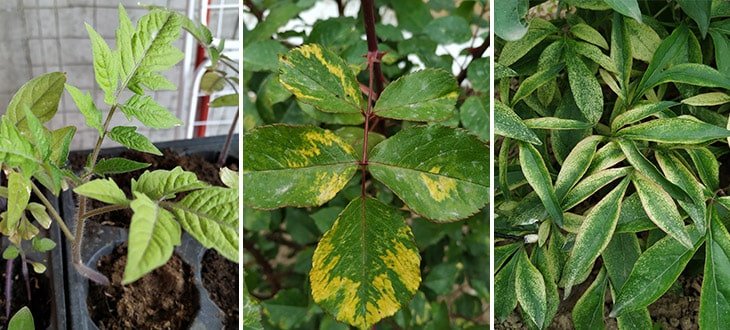9 Reasons Why Plant Leaves Turn Yellow
Plant leaves can tell many things about the health of your plants. Most of the times, the color of the leaves indicates whether a plant is healthy or not.
Naturally, the leaves of most plants are green because they contain a green-colored pigment called chlorophyll.
When the plant leaves turn to another color, fully or partially, this is a sign that something is wrong and the plant is not happy.
Yellowing of plant leaves that are normally green is known as chlorosis.
In today’s post, I will address the most common causes of why the plant leaves turn yellow and how you should approach each situation.
Some of these conditions might only occur to potted plants, while others can apply to both potted and to the garden plants.
Disclosure: This page contains affiliate links. This means that the owner of this website might be compensated for any qualifying purchases made via these links.
Contents
1. Over-watering or poor drainage
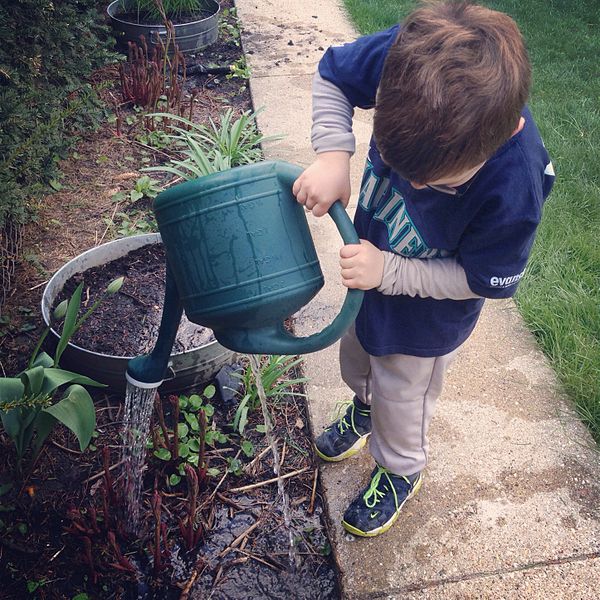
Over-watering is one of the most causes of why many plants suffer.
When people start a garden or grow a plant for the first time, they want to make sure they give the plants enough water, without realizing that different plants have different moisture requirements.
Several examples of common plants that don’t need too much water are tomatoes, beans, and spinach.
Over-watering tomato plants is probably one of the most common mistakes. Even though tomatoes like to grow in humid soil, too much water can harm the plants and their fruits.
Too much humidity in the soil can lead to plant suffocation, root rot, and favors the appearance of various fungus diseases.
When you make your plant watering schedule, you should also take into account a few factors like the soil type, time of the year, climate, etc.
A very handy tool to determine when you need to water your plants is a soil moisture meter, which you simply insert into the ground and tells you the exact level of humidity in the soil.
Poor water drainage can harm your potted plants just like over-watering, therefore, make sure that the containers allow the excess water to drain out.
Common visible signs of plant over-watering are curled leaves, yellow leaves, cracked fruits, and lumps on the lower leaves.
2. Not enough nutrients in the soil
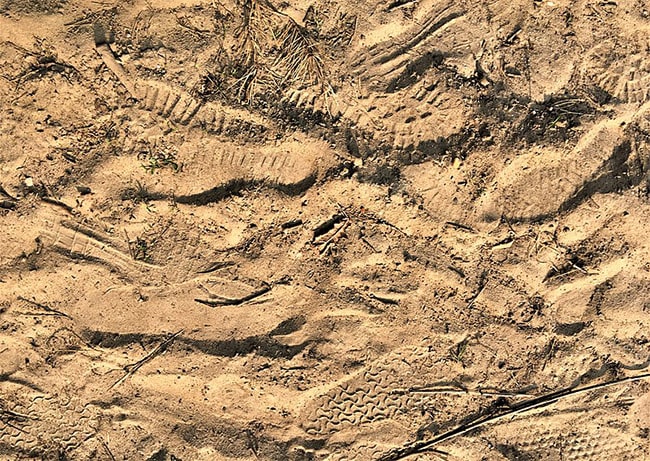
Just as the human body needs vitamins and minerals in order to stay healthy, plants also require various nutrients for vigorous growth.
A common cause why the leaves of your plants might turn yellow is the lack of the essential nutrients in the soil.
If you cultivate your plants in the same soil every year, without adding any type of fertilizer or compost, eventually, the land will become an inadequate environment for healthy plant growth due to the lack of enough nutrients.
Different plants have usually different needs in terms of the nutrients they require.
Three of the essential elements that plants need are nitrogen, phosphorus, and potassium. Other important nutrients for plant growth are calcium, magnesium, and sulfur.
Depending on the type of plants, you can use a specific type of fertilizer or a continuous-release all-purpose fertilizer which can feed up your plants for several months.
Besides adding fertilizer, crop rotation is also recommended in order to prevent pests, plant diseases, and to maintain better soil fertility over time.
3. Too much fertilizer
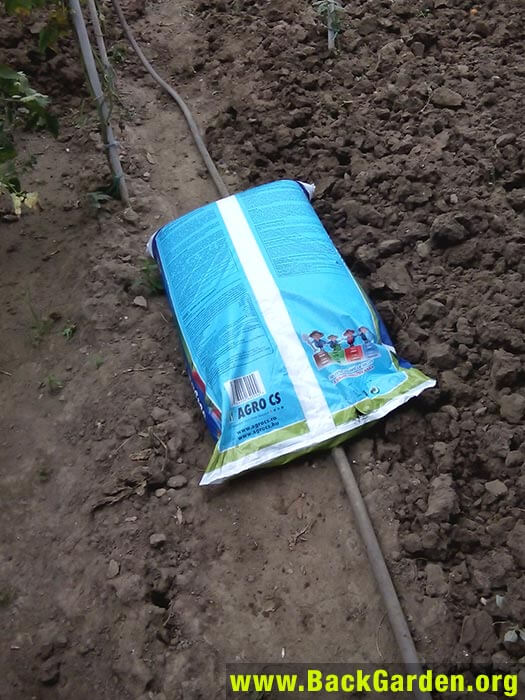
A soil that doesn’t have enough nutrients is not good for your plants’ growth. Yet, if you use too much fertilizer, your plants will also not be happy.
Adding too many nutrients to the soil can make it hard for plants to absorb other nutrients and the needed amount of water. Also, applying an excessive amount of fertilizer can change the pH of your soil, which is the measure of the acidity and alkalinity in the soil.
How do I know when plants need fertilizer?
Probably, the best way to determines what nutrients your soil needs is to perform a soil test. Fortunately, you can easily do that using a soil test kit.
A soil test will enable you to determine what type of fertilizer is best for your soil type and how often you should apply fertilizer.
Below are several common signs of over fertilization.
- The lower plant leaves turn yellow or dry out
- Margins of the leaves turn brown
- Leaves dry out and fall down
4. Dehydration
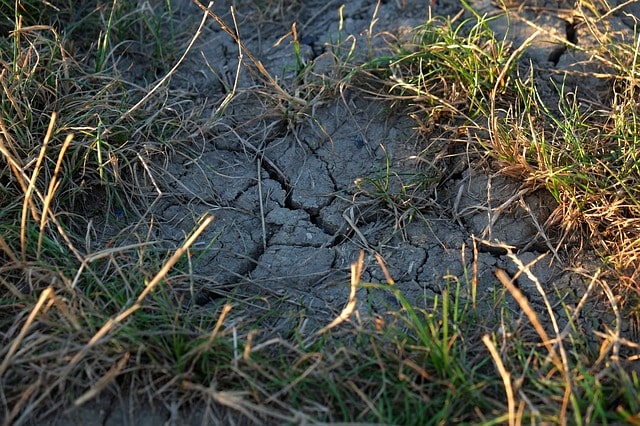
The human body is made up of about 60% water and severe dehydration can kill us.
Regarding this aspect, we are very alike with plants. The only difference is that a plant can be made up to 95% water.
Dehydration is a common cause of why the plant leaves turn yellow.
There isn’t a general rule about how often you should water your plants since there are many factors that impact this decision.
First of all, different plants need different humidity levels in the soil.
For instance, succulents are more adapted to arid environments and you shouldn’t water these plants as often as you water the cucumbers in your garden.
The soil type is another factor that you should consider when you determine how often you should water your plants.
The most common three types of soils are sand, clay, and silt.
Some soils retain water for a larger amount of time, while others dry up much faster.
Between these three soil types, silt is considered to be the best concerning the proper balance between water retention and drainage.
Clay usually retains a very large amount of water, but it is very poor at water drainage. This can lead to numerous fungal infections and the rot of the root of the plants.
Sandy soil is not good to retain water and it’s also not rich in nutrients.
Climate, time of the year, temperature, are several other factors that you should take into account when it comes to making your plant watering schedule.
Keep in mind that, as stated before, over-watering will also harm your plants. However, dehydration will kill the plants faster in most of the cases.
5. Not enough sunlight or too much
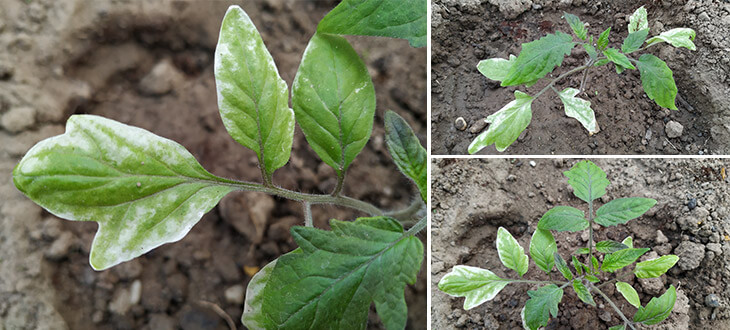
Sunlight is a required ingredient for the healthy growth of a plant.
Most plants need sunlight in order to achieve photosynthesis.
Photosynthesis is the name of the process by which the green plants use the sunlight to convert carbon dioxide and water into sugar molecules and oxygen.
The glucose resulted throughout this process will then be stored and used as a fuel for the plant.
If a plant doesn’t receive enough sunlight, its leaves will usually have a yellowish color. Sometimes, the plant will grow taller than usual but due to the lack of sunlight, it will not be very productive.
Keep in mind that sudden exposure to direct sunlight can also harm the plants and cause what it’s known as sunscald.
A good example would be of the seedlings that grew in a place with not so much direct sunlight and which are transplanted in a greenhouse.
I recently learned this lesson the hard way after my tomato plants seedlings were affected by sunscald after I transplanted them in a greenhouse. You can read the full post here.
Too much sunlight can also create problems to some plants.
Some plant types like to grow in shade or partial-shade (lettuce, broccoli, Brussel sprouts, geraniums, radishes, kale, etc.) and prolonged exposure to direct sunlight can cause them difficulties.
6. Fungus or virus infection
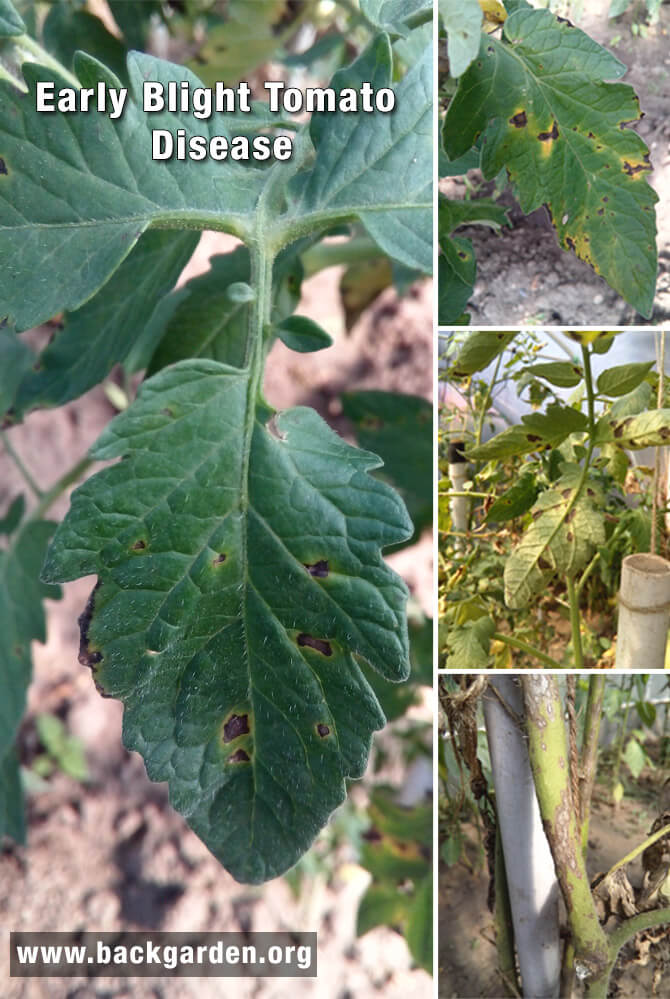
Plant leaves can also turn yellow when the plant has been affected by a fungus infection or a virus.
According to an article posted by Jim Isleib for Michigan State University, about 85% of the plant diseases are caused by fungal or fungal-like organisms.
In many cases, the plant contacts the fungus when its leaves come in contact with the soil or when the bottom leaves are splashed with tiny drops of dirt.
Most fungi develop in warm and moist environments.
When a plant is affected by a fungal infection, usually, you can see the first signs on its leaves, but this rule doesn’t always apply.
Not all the time the leaves of the plants affected by fungus turn yellow or entirely yellow. Sometimes the disease starts with brown spots on the lower leaves like in the case of the tomato early blight, or septoria leaf spot.
Plants can also be affected by viruses.
For example, the rose mosaic virus creates yellow patterns on the leaves of the roses. Sometimes, these color patterns look like a mosaic, therefore, the name “mosaic virus.”

7. Pest problems
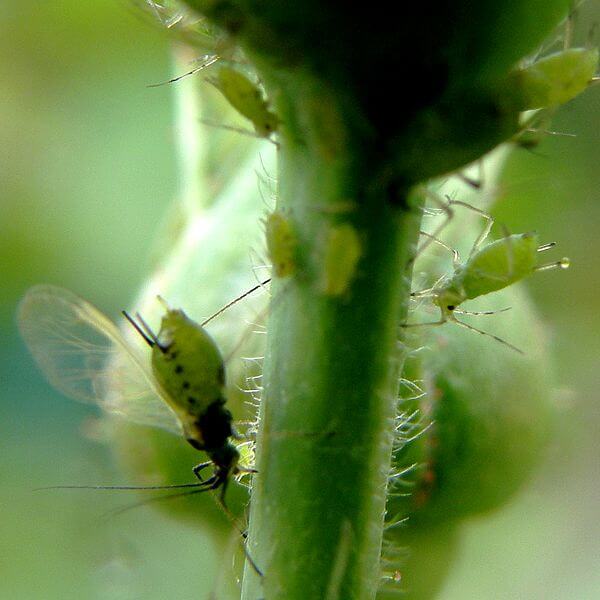
Another reason why the leaves of some plants could turn yellow is a pest problem.
Some of the most widespread garden pests that cause this problem are Aphids.
Aphids (also known as greenfly or blackfly) are small insects who feed with plants’ sap.
These tiny insects are some of the most common garden pests. Despite their size, aphids can cause significant damage to a plant.
Aphids live in colonies and once they find a plant to feed with, they usually come in a large number.
Some species of aphids inject a toxin into plants which can cause leaves to curl, distort, or turn yellow. They also can transmit viruses from one plant to another.
Not only the trees and plants in your garden can be the target of aphids. These pests can also spread to indoor plants.
If your plants have aphids, you should spray them with Neem oil.
Neem oil is a natural insecticide and fungicide that can help you get rid of several common garden pests and fungi like powdery mildew, spider mites, black spot, aphids, whitefly, and more.
8. Compacted soil / Crowded roots
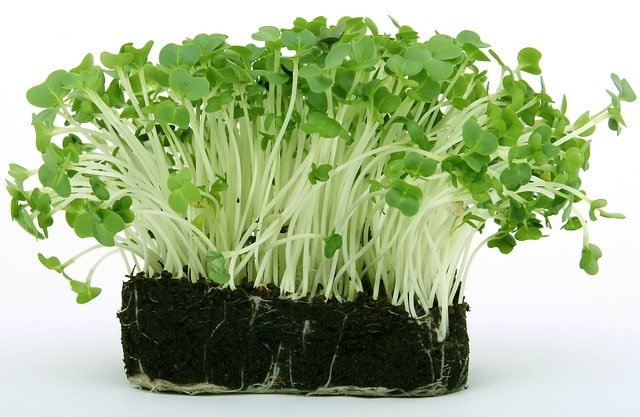
Plants need a mixture of oxygen and water in the soil for healthy growth.
A common mistake that many people do when transplanting a plant is to press the soil around the roots too strongly.
If the soil is too compacted and not enough oxygen reaches the roots of the plant, therefore, its leaves turn yellowish and the plant slowly dies.
The soil becomes even more compacted every time the plant is watered.
This problem is especially common for potted plants. In nature, earthworms loosen and aerate the soil through the tunnels they dig into the ground. Here are several tips on how to prevent soil compaction in potted plants.
A similar problem with potted plants is that these sometimes don’t have enough room to grow and their roots become too crowded and squeezed.
9. Plant aging
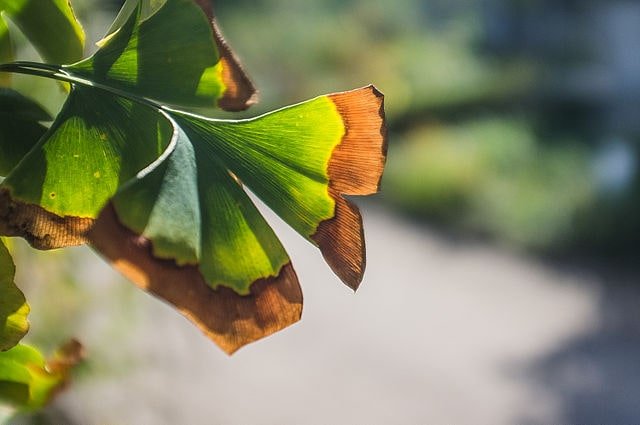
The yellowing of plant leaves is not always caused by a disease, nutrient imbalance or the lack of sunlight. Sometimes, the leaves turn yellow just because the plant has reached its full maturity.
Just as humans grow old, plants do age as well. The aging process in plants is known as senescence.
Many plants, especially the ones we grow in our gardens are seasonal plants, which means they will only last for one season.
There are also many perennial plants and trees with a long lifespan. For instance, the oldest recorded living tree in the US is believed to be over 5000 years old.
Some houseplants can also thrive for many years if they have the proper conditions.
Conclusion
There are numerous reasons why the plant leaves are turning yellow. Some can be related to a disease, pests, improper humidity, transplanting stress, not enough or too much sunlight, plant aging, etc.
In general, when some of the leaves or all the leaves turn suddenly yellow, that’s a sign that something disturbs the plant. Since the reasons depend upon so many factors, it’s up to you to determine the exact cause based on the information presented in this article.

